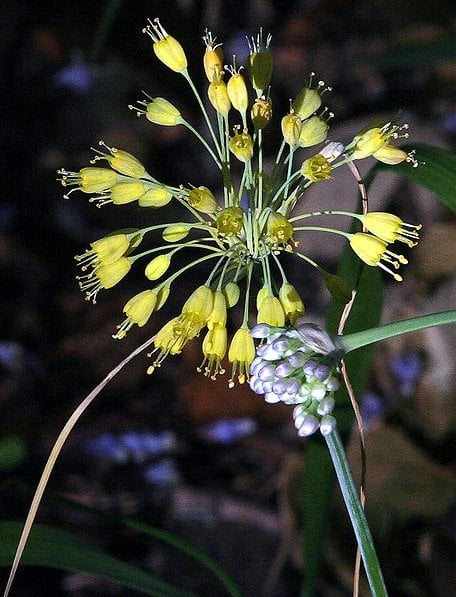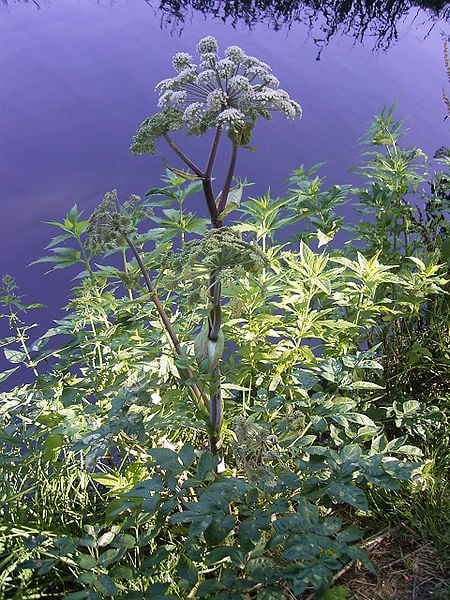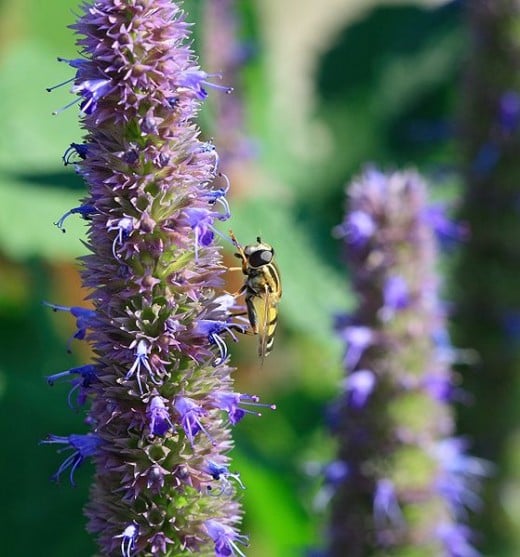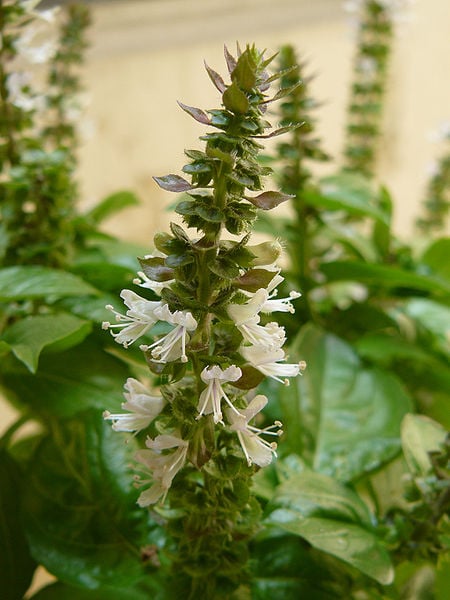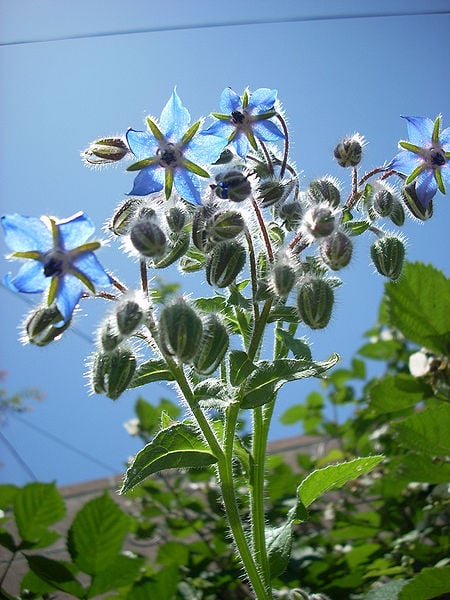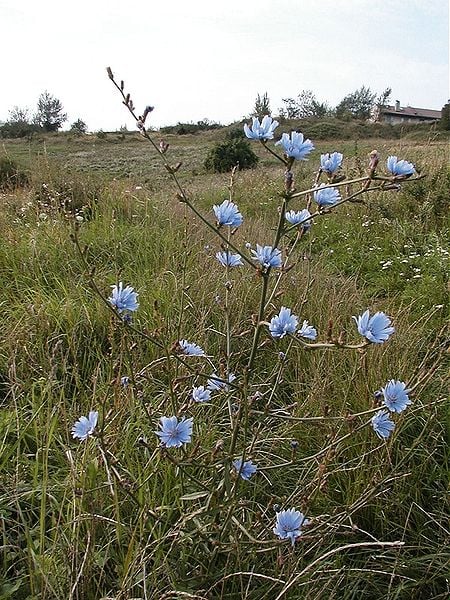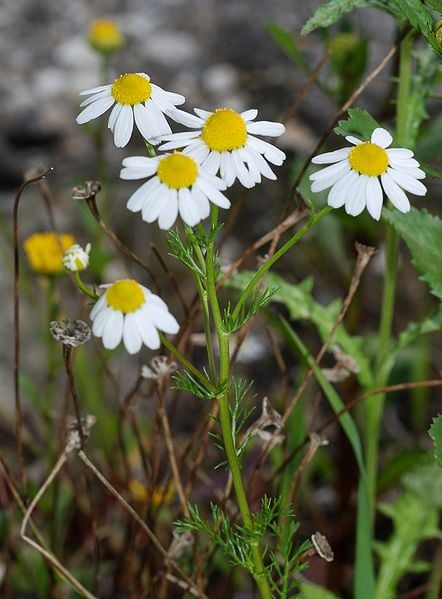Edible Flowers - Part 3
Herbaceous Flowers
This is the third of a four part series on flowers you can eat.
This hub will cover the flowers of herbs specifically, the onion family, Angelica, Anise, Basil, Borage, and Chicory.
Great care should be taken with any flowering plant. The blossoms may be edible and the rest of the plant from mildly toxic to downright dangerous. Always do some research on what you plan to eat.
Additionally, never eat the blossoms from florist supplied flowers. The growers florists get their flowers from use pesticides and the florists themselves can and will spray or water the flowers with preservatives to keep them fresh and cause them to last longer. Both pesticides and preservatives are not good to eat.
Always procure your flowers from your own garden or from a trusted grower you know to use organic growing methods.
"A weed is but an unloved flower."
- Ella Wheeler Wilcox"Flowers are the beautiful hieroglyphics of nature, with which she indicates how much she loves us."
- Johann Wolfgang von Goethe







The Lineup
Allium (Onion, Garlic, Leek, Shallot): Taste: very mild to strong onion flavor. All parts of the plant are edible with the roots (garlic, onion, shallots, & leeks) being the best known. Flowers have a milder flavor than the bulb, but stronger than the leaves. The flowers themselves are often used in salads or soups.
It is not known just how many species of Allium exist. Their flavors come from a compound called cysteine which gives onion, garlic, leek, and shallot the distinct aroma and taste.
This should not be fed to dogs or cats as they may have an extreme and deadly reaction to it.
Angelica: Taste: slight celery to licorice flavor. May be an allergen to some people so eat with caution. Angelica flowers can be used in salads and soups. It is also a great addition to fish dishes and fish stews. The leaves are also edible with slightly stronger flavors than the blossoms.
Laplanders have long used Angelica as a natural fish preservative. They have also used the root (similar to use of the potato) as food and the stalks as medicine. Angelica root (and seeds) are sometimes used to flavor gin. It is also used in Chartreuse. Candied Angelica can be used as a cake decoration.
Anise Hyssop: Taste: sweet, anise-like, licorice, root-beer (Sarsaparilla). Both the flowers and leaves are edible. Often used as a salad garnish, they also appear in many Chinese dishes. Anise leaves can be used in soup where their use is similar to bay-laurel. It should be used sparingly as it produces very strong flavors.
Basil: Tastes like: lemon and mint. Different varieties have different milder flavors of the corresponding
leaves. Basil leaves and flowers are used in a wide variety of dishes from Southeast Asia to Europe. In Vietnam basil as used as a garnish in Pho. In Italy it is a prime ingredient in pesto. Basil can also be added to flour when making pasta for a color and flavor surprise.
Borage: Taste: light cucumber flavor. Both the flowers and leaves are edible. The flower resembles the cornflower. Borage flowers are useful in punches, lemonade, gin & tonics, sorbets, chilled soups, dips and cheese tortas.
Chicory: Taste: coffee like flavor (roots), leaves taste something like endive. The flowers, buds, leaves and roots are edible. Some people drink chicory "coffee" rather than actual coffee. Those that do say chicory has a 'heavier roasted' taste. Chicory has no caffeine so it's a healthy drink. It is also thought to be a good diuretic cleansing the kidneys and liver. The closed buds can also be pickled.
Chamomile: Taste: apple and honey-like combination of flavors. From the dried blossoms a tea can be made. The tea has very definite honey and apple "notes." Like Angelica some people may be allergic to chamomile so one should initially imbibe in moderation.
Rodent studies have shown that the anxiolytic agent in chamomile has a very definite calming effect on rats and mice. Of course this may extend to humans; explaining why chamomile is touted as a sleep aid.
Onion Leaf Salad
Ensalada Nga Kutchay (kutchay is onion leaf)
Ingredients
- 15 to 20 Freshly picked onion leaves cut into half inch strips (lengthwise)
- 4 ounces Chopped Ginger
- 3 Sliced tomatoes
- 1 Tablespoon Bagoong (fish paste)
Directions
- Cut the onion leaves are cut into one half inch lengthwise.
- Mix the leaves with chopped ginger, sliced tomatoes and bagoong or fish paste.
- Serve as a side dish on a platter.
- All parts of this recipe can be increased proportionally for more.
Mixed Weed and Flower Salad
This sounds wild since about half of it is, well, wild, but it's a great tasting salad and includes the flower of the Allium Sativum (garlic).
Ingredients
- 1/2 Cup small arugula leaves
- 1/2 Cup young dandelion leaves
- 1 Cup lamb's quarter new leaves
- 1/2 Cup purslane, chopped (optional)
- 1 small head of butter lettuce, torn
- 1/2 Cup nasturtium and violet leaves, torn
- 1/4 Cup chive blossoms
- 2 tsp. fresh mint chopped and bruised
- 2 Tablespoons chopped, salted smoked almonds
- 1 Tablespoon honey
- 3 ounces apple cider vinegar
- Salt and white pepper to taste
- 1/4 cup salad oil
If you don't want the flavor of the oil to interfere (maybe the first time you make this) use canola. For a richer flavor try extra virgin olive oil.
Directions
- Carefully wash all the flowers and greens, let dry on paper
towels.
- Once dry mix the greens gently in a wood or glass bowl.
- In a separate bowl mix the honey and apple
cider vinegar, and then whisk in oil.
- Season to taste with salt and
white
pepper.
- Pour dressing over the salad tossing gently to coat all ingredients.
- Sprinkle with the chopped almonds and serve.
This will serve about four people.
Rhubarb-Angelica Compote
Ingredients
- 3 Cups white wine or apple juice
- 3-4 fresh rhubarb stalks, cut in 1” pieces
- 1/4 Cup honey (microwave for 30 seconds for an easier pour)
- 2 Tablespoons minced, candied ginger
- 1 lemon zest strip
- 1 four to six inch candied angelica stem
- 1 Tablespoon chopped angelica leaf
- 1 lemon, juiced
- 1/2 Cup water
- 1/2 Cup raisins
- 10 prunes, chopped
- 1.2 Cup chopped dates
- 1/2 Cup thinly sliced apricots
- 1/2 Cup dried cherries or cranberries
Directions
-
Combine wine, rhubarb, honey, ginger, lemon zest,
angelica,
lemon juice and water in a medium, non-reactive saucepan.
- Bring
to a boil
over high heat.
- Reduce heat to low, cover and simmer 10 minutes.
- Add the
raisins, prunes, dates, apricots, cherries and bring to a boil.
- Cover,
reduce the heat to low and simmer for 15 minutes, stirring
occasionally.
- Fruit should be soft and well mixed.
- Remove the saucepan from the
heat.
Set aside to cool.
- Once cool place in a small bowl, cover tightly and refrigerate until ready to use.
Angelica Tea Cake
Ingredients
- 4 eggs, separated
- 1/2 up angelica syrup
- 2 1/4 Cups cake flour
- 1/2 Cup melted butter
- 2 Tablespoons rum (does not need to be a high quality rum)
- 2 Tablespoons rum-soaked raisins
- 1/4 Cup finely chopped candied angelica stems
- The grated peel of 1/2 lemon
Directions
- In a large mixing
bowl, beat the egg whites until stiff; set
aside.
- Whisk the egg yolks separately and fold them into the egg whites
- Add the angelica syrup, and beat for 15 minutes.
- Fold in the cake
flour,
melted butter and remaining ingredients.
- Put the batter in a
greased loaf
pan and bake in a preheated 350F oven for 40 minutes or until
done.
You can also make muffins in a muffin pan. Just spoon in batter to the halfway point and cook at the same temperature for slightly less time. Check at 30 minutes.
Anise Hyssop
Add as you would bay laurel to soups, salads or meats. Use sparingly.
As a Pancake Topping
Ingredients
- 4 Tablespoons honey
- 1/4 Cup unsalted butter
- 1 chopped anise hyssop blossom
Directions
- Cream honey with unsalted butter and chopped anise hyssop blossoms to
serve on pancakes, waffles, or toast.
Use anise hyssop leaves or
blossoms to make tea and to flavor drinks, such as lemonade.
Use hyssop instead of sage when seasoning duck, veal, turkey, sausage, or pork.
Add young hyssop leaves to salads.
Some persons have an allergic reaction to Anise Hyssop so use with caution.
Basil Flower Uses
If you are growing basil and it has begun to flower you certainly want to try this. Cut back the flowers about one set of leaves below the flower. Add one or two Florets to your bath water.
Sprinkle basil blossoms over freshly cut tomatoes on mozzarella cheese. Delicious.
Try basil flowers in soups, on salads, with eggs, fish and meat dishes.
Borage Flower Uses
Save some borage flowers and dry them. This could take a week or two. Use them to make tea. "Dry" borage flowers is still slightly moist.
Try freezing some borage flowers in ice cubes. Serve the cubes in gin based drinks.
Candy borage flowers as a cake decoration.
Add borage flowers or leaves (new) to stews and soups in the last five minutes. They are strongly flavored so this is as long as you want them in the soup/stew.
Chicory Flower Uses
Add young chicory leaves and flowers to salads.
You can make a compress of boiled chicory leaves and flowers, in a cotton cloth, and apply to bruises and mild inflammation.
Add chicory flowers and leaves (young ones) to salads. You may want to blanch the leaves since they are a bit bitter.
Chamomile Flower Uses
To dry chamomile flowers do the following;
- Pick the flowers first thing in the morning.
- Check for and discard bug-eaten flowers. You don't want these.
- Fill a colander to the top with fresh flowers.
- Fill a bowl (the colander will fit into) with cool water.
- Add 4 Tablespoons of salt to the water.
- Place the colander containing the flowers in the bowl and gently stir the blossoms by hand.
- Skim off any bug or detritus.
- Let the flowers soak for 10 minutes.
- Remove the colander, pour the contents of the bowl out, and refill with fresh cool water.
- Replace the colander and let soak for 5 minutes.
- Remove the colander a final time, shake to remove excess water and gently place the blossoms on a cookie sheet on paper towels. You could even use a salad spinner to get most of the moisture off. Drying should take 20 minutes.
- To completely air dry leave the flowers on the sheet and cover with more paper towels. Place in a well-ventilated place for three to seven days.
- Check them daily to make sure they don't mold or mildew. If this happens toss the flowers and start over.
- Once dry store the dried flowers in an air-tight jar in a dark place.
Chamomile Tea
Use one teaspoon of flower per cup of tea. The tea is said to both calm and induce sleep.
It can also be used as a mouth-wash for halitosis.
Chamomile has also been used as an anti-inflammatory and as an antiseptic.

